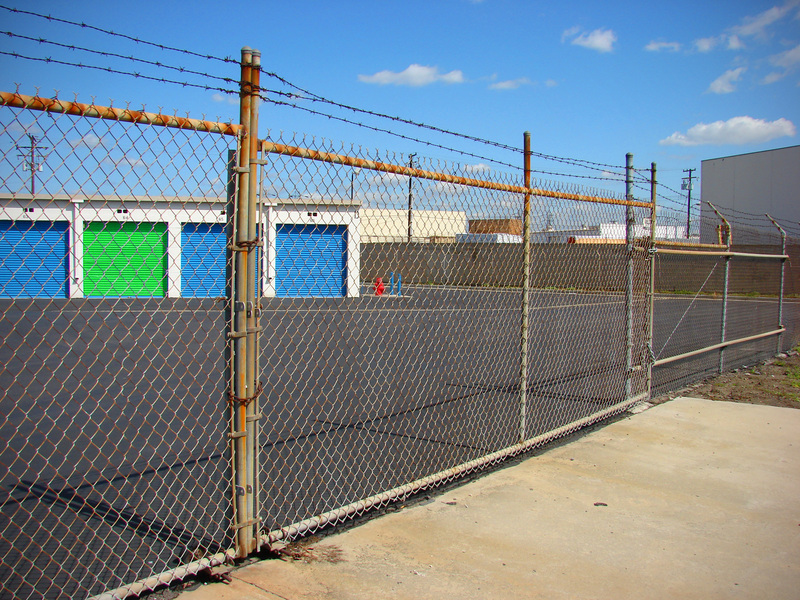Best Practices for Storing a Freezer in the Basement or Garage
When it comes to increasing your household food storage, placing a freezer in the basement or garage is an excellent option for many homeowners. However, these environments are not the same as your kitchen and bring unique challenges. This comprehensive guide provides best practices for storing a freezer in your basement or garage. Follow these tips for optimal energy efficiency, safety, and the longevity of your appliance and stored foods.
1. Assessing the Suitability of Your Basement or Garage
Before you install your appliance, it's essential to consider whether your selected area is ideally suited for freezer storage.
The Importance of Location
- Accessibility: Ensure the chosen spot allows easy access for loading and unloading, especially if you'll need to move bulky or heavy items.
- Level Surface: Place your freezer on a flat, stable surface to avoid vibrations and noise.
- Space: Allow for sufficient ventilation--most manufacturers recommend at least a few inches of clearance on all sides.
Basement vs. Garage: Key Differences
Basements are typically more insulated than garages, offer stable temperatures, and are less susceptible to outdoor weather changes. In contrast, garages can be exposed to extreme seasonal variations--both cold winters and hot summers--which you must account for when storing a freezer.

2. Choose the Right Freezer for Basement or Garage Storage
Certain freezer models perform better in environments with fluctuating temperatures. Here's how to select the best appliance for your space:
Garage-Ready and Temperature-Tolerant Freezers
- Look for "garage ready" or "garage optimized" models. These are designed to operate under temperature ranges commonly found in unheated or uncooled basements and garages.
- If possible, select a chest freezer rather than an upright freezer, as it tends to hold cold air better and is less sensitive to temperature changes.
- Read the appliance's user manual for specific ambient operating temperature ranges.
Energy Efficiency Ratings
Seek out the Energy Star label or similar indications of efficiency, as running a freezer in a non-climate-controlled area often requires more power to maintain optimal temperatures.
3. Preparing the Installation Area
Preparation is crucial to help your basement or garage freezer run more efficiently and last longer.
Steps Before Placing the Freezer
- Measure the space, including doorways and clearance for opening the lid or door fully.
- Clean the area well to keep dust and debris away from the appliance's coils and vents.
- Add insulation, if possible, to help maintain a stable environment around the freezer, especially in garages or unfinished basements.
Floor Protection and Drainage
- Place a moisture barrier (plastic sheet or vapor barrier) under the freezer to prevent condensation from damaging flooring--especially important in basements.
- Elevate the freezer on a platform (such as treated wood or a freezer mat) to avoid direct contact with damp floors and improve airflow.
- Consider floor drains in basements or use a pan to catch defrost water in garages.
4. Managing Temperature Extremes in the Garage or Basement
Controlling temperatures is one of the most important aspects of garage or basement freezer storage, as extremes can compromise the efficiency and safety of your frozen goods.
Troubleshooting Cold Weather Problems
- Very low temperatures can cause the freezer thermostat to shut off, risking thawing of contents. Use a freezer rated for cold climates or a "garage kit" that keeps the thermostat active by warming the sensor when necessary.
- Insulate the freezer with extra panels or blankets (but avoid covering vents or the motor area).
Dealing with High Temperatures
- In summer, garages can exceed safe ambient temperatures for freezers. Excessive heat makes the appliance work harder and increases energy usage.
- Use fans or portable air conditioners in the area if regular temperatures climb above 100?F (37?C) for extended periods.
- Where possible, install the freezer away from direct sunlight and not right next to the garage door or external walls.
5. Providing Proper Electrical Supply and Safety
The right power supply and safety measures are critical to prevent hazards and ensure reliable freezer performance.
Power Outlet and Placement Tips
- Plug the freezer directly into a dedicated grounded outlet. Avoid extension cords, as these can present fire hazards and damage the appliance.
- Check that your circuit can handle the freezer's amperage, especially if you have other appliances in the same area.
- Position the freezer so the power cord is not stretched or pinched, reducing the risk of electrical faults.
Protecting Against Power Interruptions
- Consider a surge protector designed for refrigerators and freezers.
- Install a temperature alarm to alert you if the freezer gets too warm due to a power outage or malfunction.
6. Preventing Moisture and Pest Problems
Basements and garages are more prone to moisture and pests than kitchens, so some maintenance steps are essential for long-term storage success.
Managing Moisture and Humidity
- Always keep the freezer's seals clean and in good condition to prevent warm, moist air from entering.
- Use a dehumidifier in the area if you notice excess condensation or if basement humidity is high.
- Check for leaks after heavy rains and keep the freezer away from known damp spots.
Stopping Pests
- Store food in airtight containers inside the freezer and keep the area tidy to prevent attracting rodents or insects.
- Seal gaps and cracks around windows, doors, and foundation walls to block entry points.
7. Organizing and Maintaining Your Freezer
Organizing your freezer not only helps you maximize storage space but also improves the efficiency of the appliance.
Smart Storage Tips
- Label foods with freezing dates and rotate stock, placing newer items at the back or bottom.
- Use bins or baskets to group similar items and make retrieving products easier.
- Do not overfill; leave some space for air circulation, which helps maintain a consistent temperature.
Routine Maintenance Checklist
- Defrost the freezer regularly (unless you have a frost-free model) to keep it running efficiently.
- Vacuum the coils and clean vents every few months to improve heat dissipation.
- Check and clean the door gasket as needed to ensure a tight seal.
- Test the temperature: keep the freezer below 0?F (-18?C) at all times.
8. Monitoring Freezer Performance
Continuous monitoring will extend both the life of your appliance and the safety of your food.
Tools for Monitoring Temperature
- Install a freezer thermometer (not just relying on built-in digital displays) for accurate readings.
- Some smart freezers offer mobile app connectivity, letting you track status and receive alarms for malfunctions or temperature fluctuations.
Signs Your Freezer May Need Service
- Unexpected frost buildup or presence of ice outside of the normal freezing area.
- Unusual noises, continuous running, or room temperature rising near the freezer.
- Food not freezing solid or developing off odors despite correct settings.
9. Extra Tips for Troubleshooting Common Freezer Challenges
Power Outages
- Keep the freezer door closed during outages to maintain the cold as long as possible--usually up to 48 hours if unopened.
- If your area is prone to outages, consider a backup power solution such as a portable generator or battery-powered alarm system.
Dealing with Odors
- Place an open box of baking soda or activated charcoal in the freezer to absorb smells.
- Clean the interior with a mix of water and vinegar periodically.

10. Frequently Asked Questions
- Can all freezers work in a garage or basement?
No; always check manufacturer recommendations for ambient temperature ranges. - Is it safe to use an extension cord?
Never use a standard extension cord. If absolutely necessary, use only those rated for heavy appliances and short distances, but this is generally discouraged. - What about keeping a freezer operational during heavy frost or snow?
Insulate the space, elevate the freezer, and consider a freeze-protection kit if available from the manufacturer.
Conclusion: Maximizing the Benefits of Basement or Garage Freezer Storage
Properly storing a freezer in your basement or garage can be a safe, convenient, and economical way to expand your food storage capacity. By following these best practices--including choosing the right model, controlling the environment, ensuring safety and maintenance, and keeping your area organized--you'll ensure your appliance works efficiently and safely all year round. Make it a habit to check and maintain both the freezer and its immediate surroundings, and your investment will pay off with years of reliable service.
Whether your priority is energy efficiency, food safety, or maximizing space, these guidelines will set you up for success with garage or basement freezer storage. For more detailed guidance, always consult your freezer's user manual and professional appliance technicians as needed.